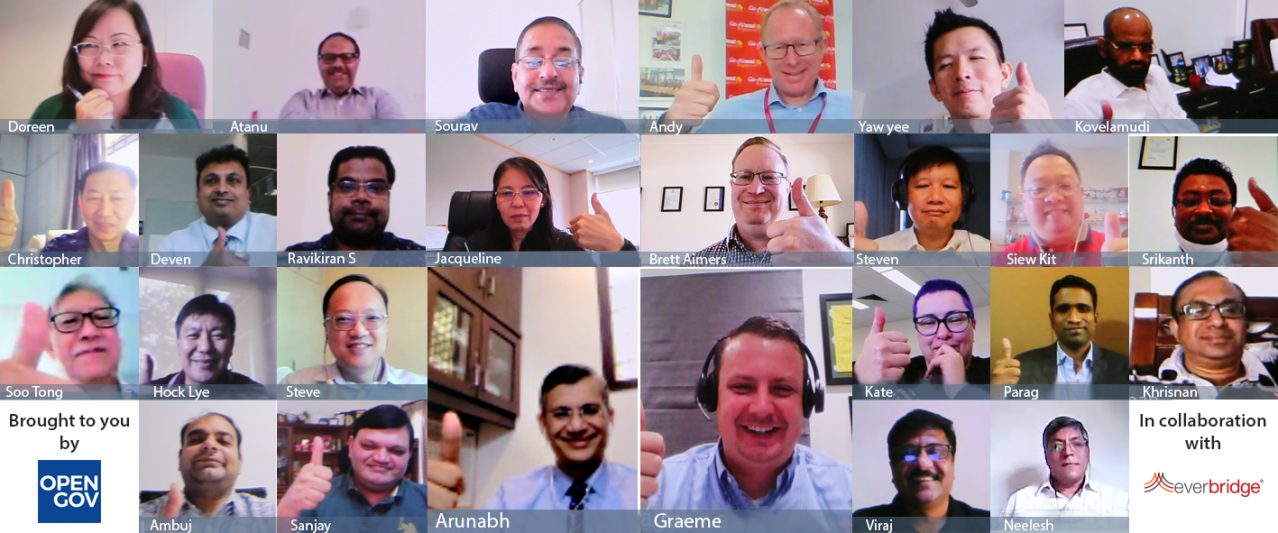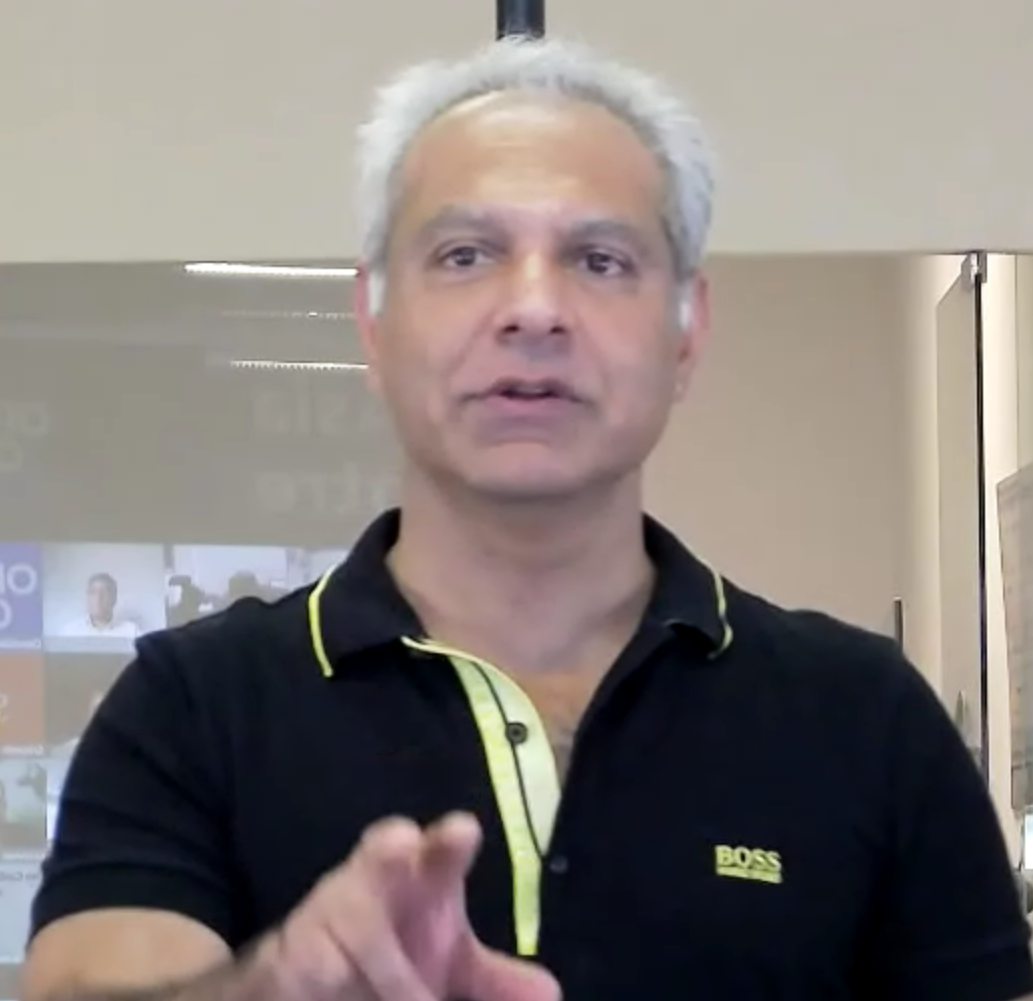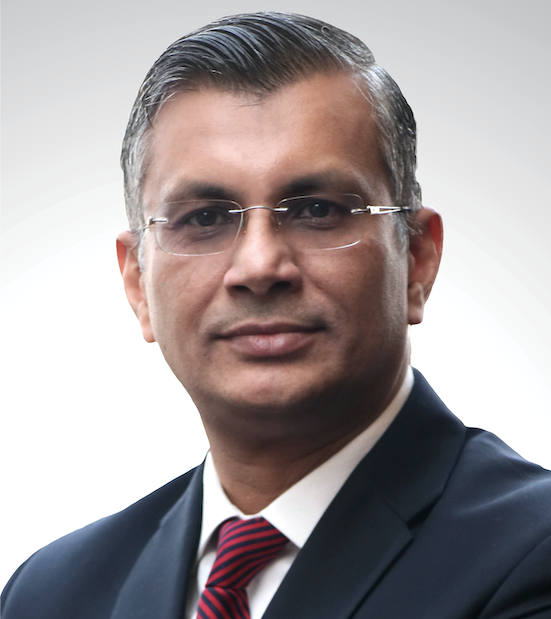
The COVID-19 Pandemic has dominated 2020 and seems to be poised to take over at least the first half of 2021.
But what have we learnt from the unprecedented health crisis of the past year? Have we gleaned enough to be well prepared for the next pandemic or natural disaster? Have governments and organisations gained adequate insights to be resilient and continue operations during future critical events?
These are some crucial questions that must be answered to know how well prepared you are for the next major critical event. OpenGov Asia delved into these important issues at its recent OpenGovLive! Virtual Insight with delegates from Singapore, Australia, India and Hong Kong.
Keeping with the OpenGov Asia track record, there was 100% attendance from delegates who were fully immersed in the interactive OpenGov Asia experience.
A collective and coordinated effort of different parts of an organisation is key to strengthen resilience

Mohit Sagar, Group Managing Director and Editor-in-Chief at OpenGov Asia gave an overview of the session with the audience with his opening presentation.
Mohit recounted historically countries across the globe have been overcome different kinds of disasters individually or is clusters but never have they encountered such a situation where the whole world has been hit by a crisis of such magnitude.
This is part of the reason organisations and leaders were stopped dead in their tracks when the pandemic initially hit. There was a lot of panic in the general public as well as top leaders as at the most basic of the necessities seemed endangered at the start.
No one was prepared to run entire businesses with people locked up at home. Business continuity management plans did not take into consideration a critical event od such scope and depth.
The world is at a tipping point and will be quite unstable until there are concrete signs of an effective cure and vaccine. So, organisations must put together all their resources in a coordinated manner with sound planning to keep operations running without compromising the safety of people.
Mohit left the audience with advice to partner with experts in Critical Event Management space rather than trying to come up with a solution on their own.
Being prepared in advance is the secret to successful critical event management

After Mohit laid the foundation, Graeme Orsborn, Vice President – International CEM Business Unit, Everbridge shared his insights on the topic.
Graeme began by very simply explaining the meaning of critical event management. When things that people care about like our friends, family, staff, infrastructure, supply chain and reputation intersect with threats like physical disruption, threats, system failures etc., that leads to a critical event.
All organisations are undergoing a fundamental shift in the way they operate our businesses and the key is to be prepared in advance for the impending danger or critical event.
Graeme went on to acknowledge that while being prepared sounds very simple and easy, implementing it can be quite a challenge for organisations. Currently, the process of managing critical events is largely manual, disjointed and takes significantly longer to work through.
He enumerated the challenges to critical event management as follows:
- Problems in locating who and what is impacted
- The criticality of impact on the assets
- Taking the right action to protect endangered business assets
- Analysing the situation to assess the effectiveness of a plan
After highlighting the problems, Graeme proposed the solution or the correct approach for dealing with critical events. He suggested a four-step strategy:
- Assess the context and severity of the critical event
- Locate and identify stakeholders and assets
- Take action to inform, notify, rally, collaborate and recover
- Analyse own performance and improve
He also shared with the audience the wide range of CEM solutions offered by Everbridge to help organisations mitigate risk and accelerate resolution when events become critical.
Graeme concluded his presentation by sharing Everbridge’s strategy to deal with the most recent critical event, i.e. the COVID-19 pandemic. The three broad parts of this solution included: Know your risk, protect your people, recover and protect your operations.
Make resilience a part of organisational culture to tackle critical events effectively

After Graeme’s presentation, Arunabh Mitra, Chief Continuity Officer, HCL technologies spoke on the topic at hand.
Arunabh opined that as a result of globalisation today, organisations are faced with several interconnected challenges. While on one side, processes like globalisation and industrial revolution are indicators of progress, on the other, risks hovering around them also have a cascading impact on all industries and sectors. He alluded to the fact that our world today is no longer a simple linear structure, rather it’s a system of systems highly interdependent.
He then expounded about the shocks and stresses that disrupt the usual operations and test the resilience of governments and organisations time and again. He shared with the delegates the iceberg model of disruptive events: better preparedness for the events we have better visibility of as we can relate to those events better. However, he conceded that the recovery path for the different events in the iceberg model will vary.
Arunabh moved on the COVID- 19 crisis and how it impacted organisations globally. He reiterated that it was an event unprecedented in scale, complexity and velocity.
He talked about the 3R wave or pattern of organisations’ response to the pandemic::
- Response: This was the initial stage of the hit when organisations were occupied with keeping their people safe and continuing business.
- Return and Reimagine: This stage kept organisations busy with envisioning and implementing what the new workspace will look like
- Reform: This is the stage when organisations are contemplating how to enhance productivity in the hybrid workspace.
Arunabh explained that companies that made people a priority, who had invested in resilience and who had made it a part of their culture, did it better than others.
He concluded his presentation by highlighting that the key to being truly resilient is to embed it in the DNA of every layer of the organisation with certain design principles in place.
After the informative presentations, it was now time for the interactive polling session with the delegates.
On the first question regarding an organisation’s preparedness to respond quickly and decisively to critical events, a majority of the delegates voted that they are well prepared but there is room for improvement (72%).
To this, a deputy director from a media company in Singapore reflected that after dealing with the recent pandemic, they are confident that they are prepared to deal with a future crisis but at the same time there is a lot that they still don’t know and can learn, so cannot be complacent.
On the next question about the department/organisational division responsible for leading the response and preparedness efforts during a critical event, a major chunk of the delegates voted for other than operations, human resource, Information and Technology, or the CEO (47%).
On this issue, a delegate from a public sector organisation shared that they have a separate safety division responsible for coordinating actions and preparedness at the advent of a crisis or a critical event.
On the final question of instant access to critical information needed to evaluate risk and take action during emergency events, 57% of delegates voted that they have established systems to spot events that could endanger company assets.
The president of a major healthcare organisation from India shared that since they are responsible for the lives of not just their employees but also their patients, they have made sure that they have the correct systems in place that inform them of an impending disaster.
After the interesting insights and sessions, Graeme once again addressed the audience to conclude the session.
He felt that it would be interesting to see how culture in organisations will undergo a shift to adapt to the new norm of working. He was also convinced that big data and analytics would play a major role in helping organisations to be more predictive and better prepared for future critical events.
Graeme urged delegates and their organisations to move from having a reactive approach to being proactive in their response to managing critical events and to leverage technology in their efforts.
















